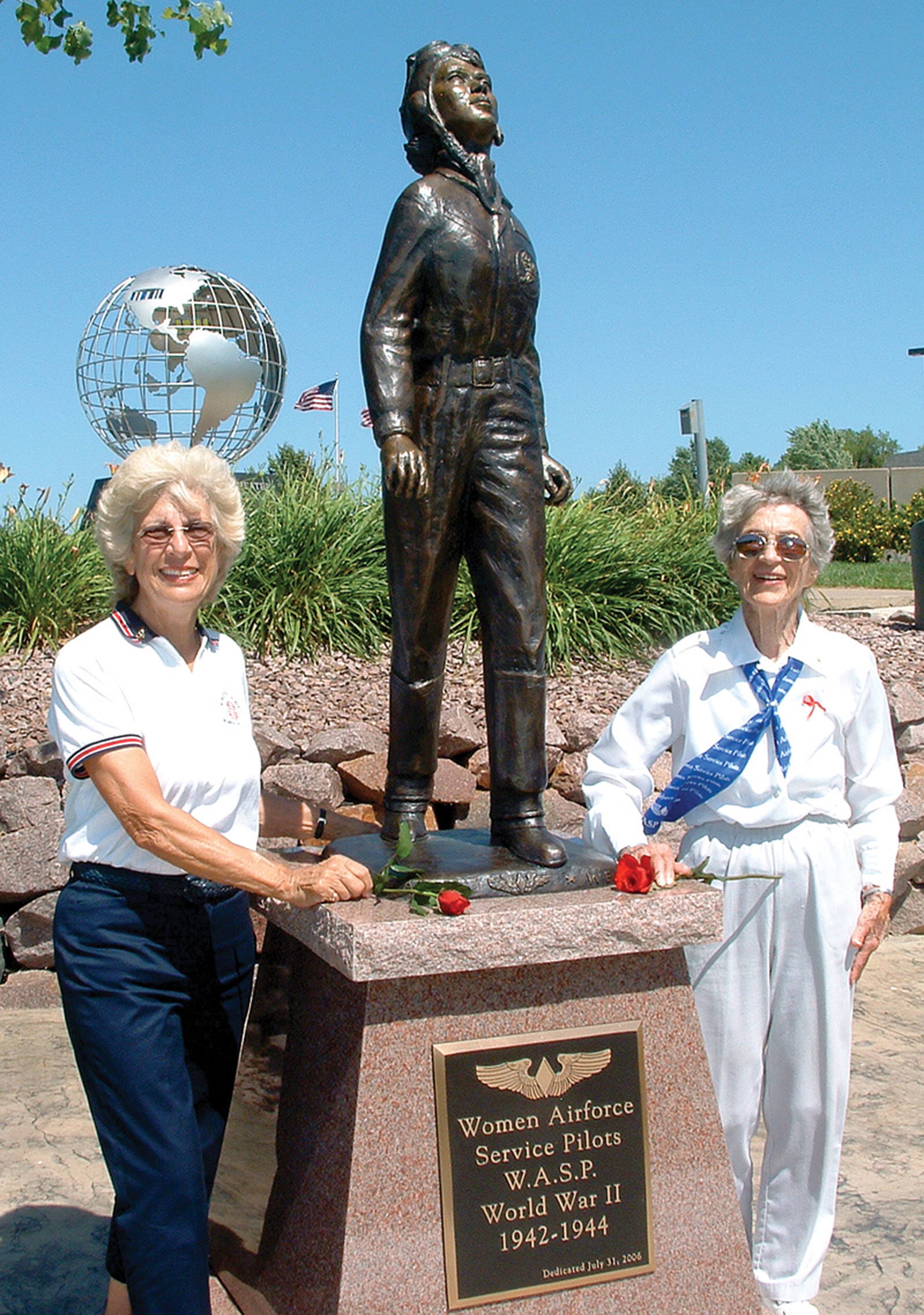By Rose Dorcey
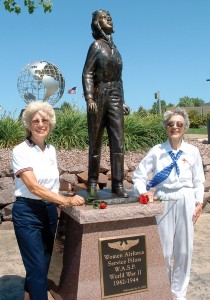
Carol Hamilton and Dorothy Swain Lewis stand beside the WASP Tribute. The tribute sits on a red granite base, below a World War II Memorial Globe.
During World War II, an elite group of young, daring female pilots became pioneers and heroes. They served diligently and proudly, ferrying and testing aircraft, towing targets and training men to fly. They sacrificed much. They were the Women Airforce Service Pilots, the first women trained to fly U.S. military aircraft. When the war was over, the government disbanded them and sent them home. In the late 1970s, the women finally received veteran status for their service.
On Monday, July 31, a WASP tribute was dedicated at The Highground Veterans Memorial Park in Neillsville, Wis. Carol Hamilton, a Coachella Valley (California) Ninety-Nine, led an effort to place the tribute in Wisconsin. She said she wanted people to remember the pioneers who had a dream to fly and despite great odds, learned to fly. She said the dedication is the culmination of a dream.
“We hope this tribute will stand for centuries and be an inspiration to young women to remember the pioneers of women in aviation long ago—young women like themselves who dreamed to fly and despite great odds, earned the well-deserved right to do so,” Hamilton said at the ceremony.
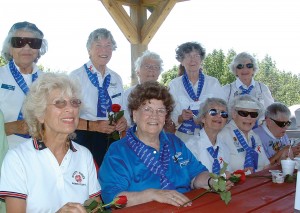
The nine members of the WASP in attendance included (L to R) Betty Jo Reed, Dawn Seymour, Betty Brown, Mickey Brown, Marty Wyall. Carol Hamilton (99s) is seated with Margaret Ringenberg, Dorothy Swain Lewis, Carol Bayley Bosca and Jeanette Kapus.
WASP Dorothy Swain Lewis, an accomplished author, artist, equestrian and pilot, created a bronze statue of a woman pilot that represents their service to their country. An inscription at the base reads, “We live in the wind and the sand and our eyes are on the stars.”
Cholene Espinoza was the keynote speaker. Espinoza is a former U.S. Air Force U-2 pilot, an author and United Airlines captain. She spoke from her heart, saying that it’s rare to have the opportunity to meet the pioneers who blazed the trail for her and others like her. She sees the tribute as one that will encourage youth to consider aviation as a career choice.
“Out of World War II came an opportunity for these women to serve. That’s why we’re here today; it’s a tribute to your service and what it means,” Espinoza said. “I wouldn’t have had the opportunity to fly the U-2, to see the curvature of the earth, and to fly hundreds of people across the country if these women had failed. Boys and girls will see this tribute and think of the possibilities.”
Of more than 1,000 women who served in the WASP, approximately 250 are still alive. Most of the nine WASP members who attended drove three hours from AirVenture Oshkosh where they held a weeklong reunion. Each had the opportunity to say a few words to the audience.
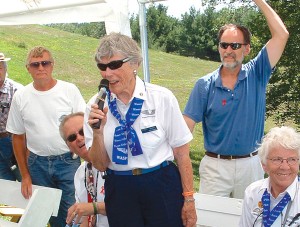
Right: Dawn Seymour shares a few memories and words of thanks with the appreciative audience. Nearly 100 people came to meet the members of the WASP and thank them for their service.
Margaret Ringenberg said that the WASP unit gave her wonderful memories and the chance to serve her country and fly. Betty Jo Reed echoed those thoughts.
“People are thanking us, but we were thankful to fly and serve the United States,” she said.
Betty “BeeJay” Brown said, “There’s getting to be more and more female pilots, but there’s still not enough.”
All of the women spoke of the close ties they’ve formed.
“We’ve really bonded, and it’s really good to have these friends,” said Carol Bayley Bosca.
Swain Lewis said, “When you see this tribute, think of us, and we will think of you.”
In a moving remembrance, the Highground’s liberty bell rang as the names of the 38 WASP who died in the performance of duty were read. Dawn Seymour recalled a Wisconsin WASP, Margaret June “Peggy” Seip, who was killed in service.
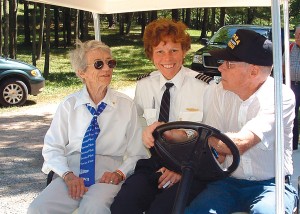
A Highground volunteer gives Dorothy Swain Lewis and Cholene Espinoza a ride to the top of the Highground.
“It’s in her memory that I thank you all very much, indeed,” said Seymour.
The tribute is one of five to be dedicated throughout the country. Sister tributes are located at Avenger Field in Texas, the Air Force Museum in Ohio, the Air Force Academy in Colorado and at the Confederate Air Force Museum in Texas.
All were delighted by the “beautiful spot” where the WASP tribute sits. Other tributes on the grounds include the World War II Globe, Gold Star Families, Legacy Stones Walkway, The Doughboy, and a Vietnam tribute, Fragments. The Highground overlooks miles of forested hills and valleys in Central Wisconsin. The 140-acre Highground Veterans Memorial Park relies on volunteers and contributions. It receives no federal or state funding. The greatest priority of The Highground management team is to honor and serve veterans and their families by providing a place open to healing and education.
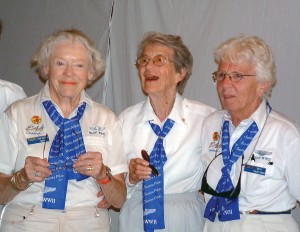
Carol Bayley Bosca, Dorothy Swain Lewis and Betty “Bee Jay” Brown share a laugh before the ceremony.
Donations to offset the costs of the WASP tribute are still needed, and can be sent to The Highground earmarked “WASP tribute.”
For more information, visit [http://www.thehighground.org].











